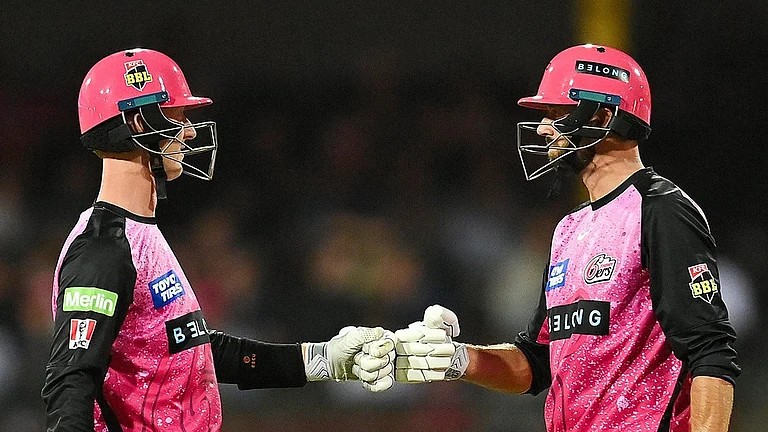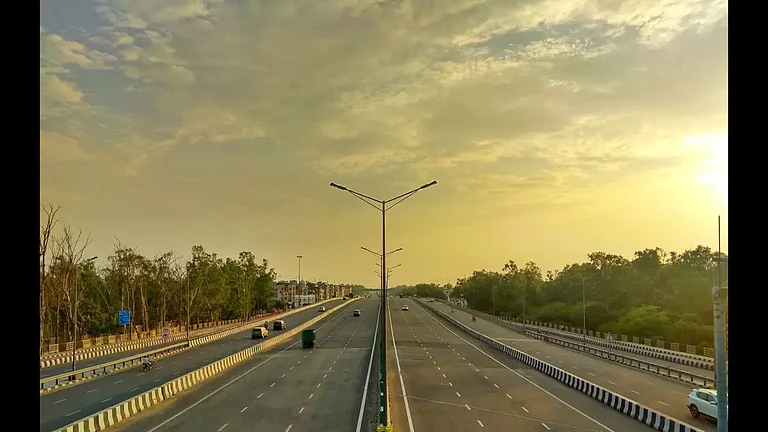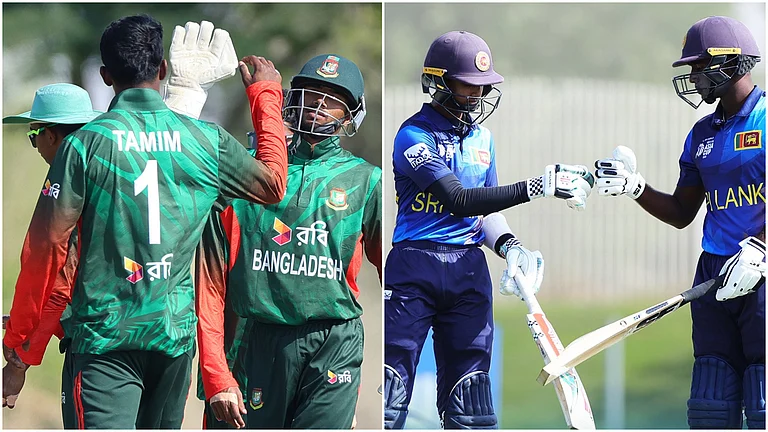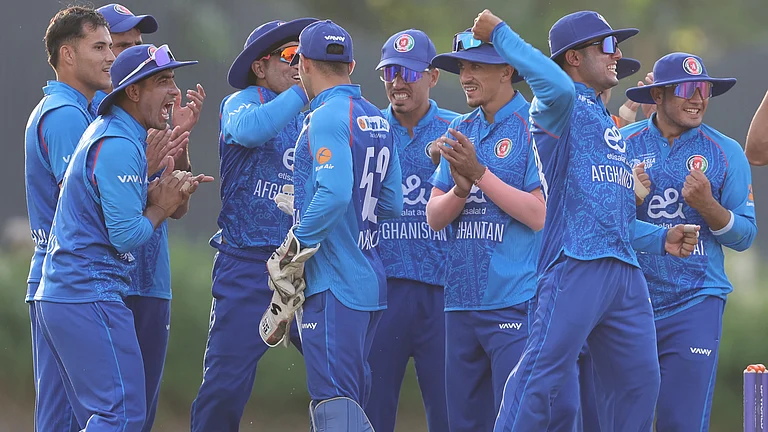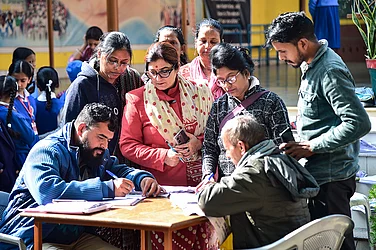The Big Push
- The BJP’s poll advertising campaign will urge voters to give party not merely victory, but a decisive mandate of 272
- At Modi’s urging, those manning the helm have been told that the campaign should have a swadeshi imprint
- In urban India, ads, hoardings and TV spots will harp on Modi’s development record, especially his work in Gujarat
- In rural India, the campaign will also project Modi as a Hindu mascot—in as many as 25 regional languages
- Like Hindustan Lever’s ‘Project Shakti’, the campaign will engage “local heroes” to sell Modi
***
Theme sealed, delivery detailed, individuals working on BJP PM-hopeful Narendra Modi’s campaign committee have their tasks well-defined. The message to the electorate, too, has been defined simply and directly: ‘Don’t give us a favourable verdict, but a decisive verdict.’ We want 272; give us 272. This is the equation the party wants solved.
To that end, with just days to go for the national campaign to kickstart, the party’s senior planners are brainstorming and ideating with hired and volunteering professionals to unleash a blitzkrieg. The publicity committee, run by Arun Jaitley, Sushma Swaraj, Amit Shah and Sudhanshu Trivedi, has set out a precise, three-point campaign code: Modi, swadeshi, perfection. Over 100 senior campaign managers working silently in election war-rooms across the country have been told to adhere to these three principles. They regard it as etched in stone: after all, the code has the stamp of Modi himself, someone whose hardsell can be difficult to match.
“Modi has been clear on one count: the campaign must have an overkill of swadeshi and the job must be helmed by perfectionists,” says a core team member. “We’ve been told in no uncertain terms that nothing short of perfection will be accepted.” As for the hiring of foreign agencies while yelling swadeshi, there has been much talk and criticism: in fact, critics have spoken against any ad agency at all running campaigns. And political parties, the BJP included, have played shadow games around the issue, farming out particular ads or projects to certain agencies, hiring (or seeking as volunteers) key personnel and so on.
Modi has chosen Sam Balsara—head of Madison Media and being described in top BJP circles as the ‘srk of advertising’—as media planner for the campaign. The idea, sources say, “is to ensure that the best in the marketing and advertising world are employed to flood the social media and the digital, TV and print spectrum with Modi’s face.”

The emphasis in the national campaign, sources confirm, will be on “the anti-incumbency factor working against the UPA and Modi’s leadership”. Modi’s record will be projected, highlighting his decisiveness as an administrator and his development record in Gujarat. In the villages, however, a highly placed source says, the party will not shy away from “projecting Modi as a Hindutva mascot as well”, for the party believes that will be the “right amalgamation for voters”. Says the source, “We’re looking at the biggest ever outreach attempted in any election ever held.” It is for this purpose that BJP bosses have shortlisted as many as 25 different regional languages for the national campaign, with local flavour and idiom being added to them wherever required. Besides, state- and regional-level issues will also be covered.
In the states, the BJP is planning to use local heroes to strengthen Modi’s campaign. A senior poll-planner explains, “The BJP is known as a party with an urban base, so this time we will use technology to market our ideas and philosophy to the rural population.” The idea is adapted from Hindustan Lever’s ‘Project Shakti’ ad strategy, in which village women were roped in as ‘Shakti Ammas’ to sell its products. “We’ll employ the same strategy to sell Modi in back-of-beyond villages, using people from those areas,” says a campaigner.
Rural outreach will be run through OB vans relaying Modi’s message and vision to villagers. A senior leader says, “Mobile HD cards with patriotic songs and BJP anthems to be penned by well-known adman and lyricist Prasoon Joshi will be deployed there.” Party seniors confirm that Prasoon has been engaged as creative head for anthems and related material, but he insists that “the avatar I appear in the campaign will have to be as a company. I am not engaged in a personal capacity. A subsidiary of McCann called tag has made an initial warming up ‘Credential Presentation’ to the BJP, but nothing has been finalised yet”.
Even as the ‘Chai Pe Charcha’ programme gathers steam, Modi confidante Anandiben Patel, along with Smriti Irani, is reaching out to youth through the ‘Sapnon Ka Bharat’ programme: the two are travelling to college campuses, conducting exchange sessions and writing and music competitions. They have already logged 20-plus sessions, with the slogan, ‘Sing for India, Strum for India, Write for India, Vote for India’. The subtext, of course, is: do all that for Modi.
Given that the man himself has taken to social media like a fish to water, the party has put an army of professionals in charge of its social media campaign. “Modi believes very strongly that new-age media has helped him reach out to people, especially the youth, and therefore, he has chosen the party’s national treasurer, Piyush Goyal, to drive that campaign,” says a leader. Guided by Modi, Goyal has put together a team of professionals to head specific departments in the social media sector. Each of them has been assigned specific tasks.
On the job are established professionals, beginning with Prashant Kishore, an ex-Unicef man now heading the 70-member Citizens for Accountable Governance (CAG). He’s in charge of advertising on internet and social media. Interestingly, Kishore’s CAG recently released a book, Moditva and Namovani, at the Chinmaya Mission, Delhi.

On the page The launch of Moditva & Namovani. (Photograph by Jitender Gupta)
Abhishek Lodha, MD of the Lodha Group and son of Malabar Hill MLA Mangal Prabhat Lodha, is in charge of generating funds online. Another long term associate of Modi, Hiren Joshi, has been given charge of generating publicity material and literature for the internet. Joshi, who has been associated with the Vivekanand Foundation, has the blessings of the RSS. He has been taking care of Modi’s personal Twitter and Facebook accounts for long. Rajesh Jain, a digital media and technology entrepreneur best known for Niti Central, a web portal, is responsible for creating and organising a space outside of social media for the right wing on the internet, essentially through blogs and write-ups. He is assisted by Kanchan Gupta.
Another lieutenant handpicked by Modi is Prasanna Karthick, an ex-KPMG consultant. He directs the party’s National Digital Operations Centre or N-Doc, which helps the party’s IT cell, headed by Arvind Gupta, in playing Modi’s speeches live on Yuvai TV, an internet channel. N-Doc also works with an army of over 2,000 call centre employees and about a lakh volunteers to gauge the mood of the cadre and the voters, passing on nuggets of information to the party bosses to help formulate and finetune campaign material. Gupta, working from the BJP’s headquarters on Ashoka Road, also manages social media pages for senior leaders like Sushma Swaraj.
Anupam Trivedi, Dehradun-based head of the party’s communication cell, monitors and pushes “written material on the internet”, analysing what people are saying and providing feedback to party seniors. Vijay Chadha, a social media specialist from Bangalore, has been roped in as an advisor to Modi, and Sunil Alagh, a business executive and well-known face on TV debates, to prepare a broader campaign strategy for rural areas with Piyush Goyal. The social media team is also working with NRIs who sympathise with the BJP to generate positive vibes for the party on the NRI internet space. In this, Gupta is supported by Vijay Jolly.
With seven years of work in the social media space, starting with YouTube in 2007, and Facebook and Twitter in 2009, Modi has no doubt ensured growing clout in the virtual world. Only summer 2014 will tell if the virtual NaMo chant will convert into real votes across India.
By Prarthna Gahilote in Mumbai







